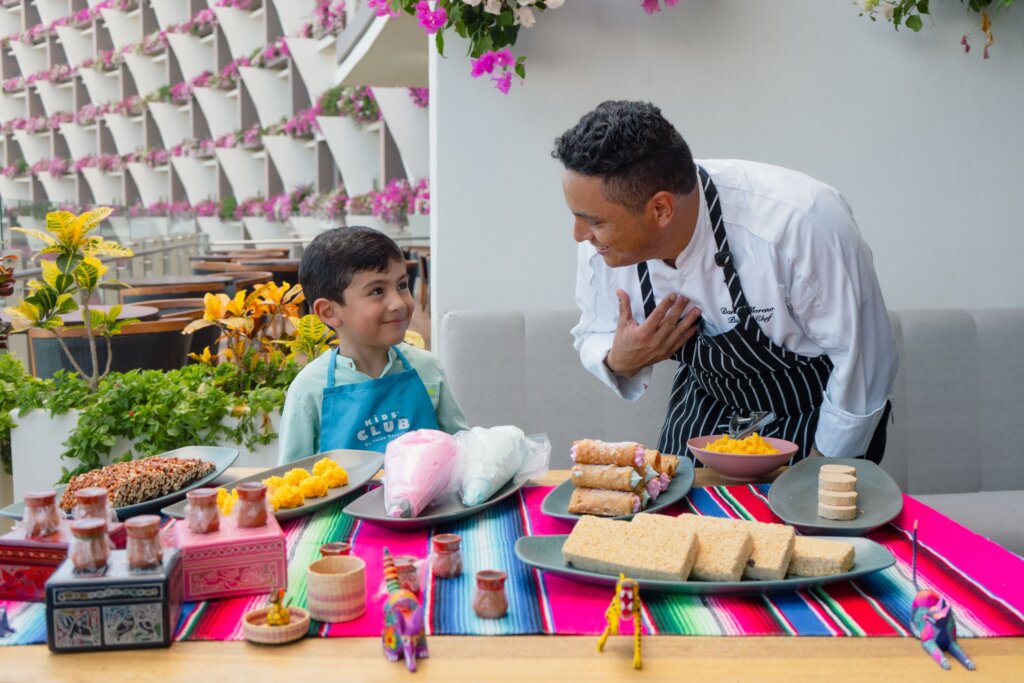Typical Mexican Candies: Sweet Delicacies
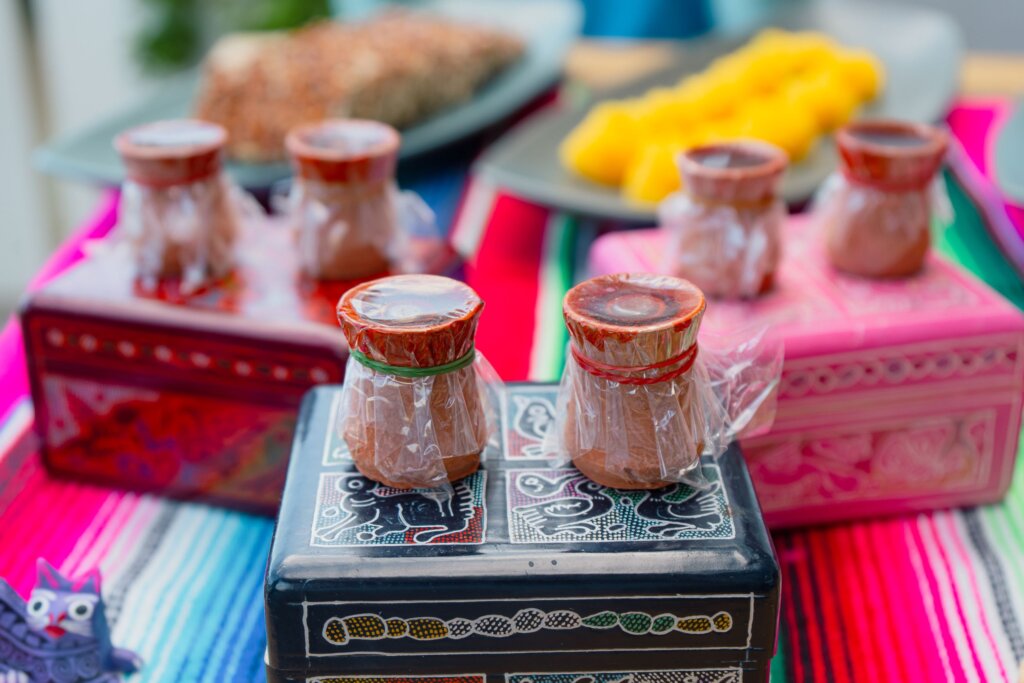
Little Mexican delicacies are usually found at town fairs, local shops, and touristic destinations; once you discover their textures and traditional Mexican flavors, you cannot stop wanting more. Yes, we are talking about typical candies. As part of the culture and gastronomy of Mexico, the uncountable kinds of candies are also typical elements, like chocolate.
In México, the first candies were created in the pre-Hispanic era, when some indigenous communities used natural ingredients to add sweetness to some food and beverages. These communities used to add agave honey, which was replaced by piloncillo (an unrefined whole cane sugar) upon the arrival of the Spaniard culture to the continent. It is usual to have thick caramel/honey added to a mixture of seeds, thus resulting in enjoyable candies like the popular alegrías. With amaranth seeds and honey, these soft bars can also include nuts, peanuts, raisins, and pumpkin seeds.
These are our Top 5 typical Mexican candies, and you want to try them on your next trip to Mexico. You may have had some of them, so we will refresh your memory with this exquisite list.
Jamoncillo
Made from sugar and milk, its soft caramel texture mixes with the nuts that complement this candy. They are usually brown, but pink and white are everywhere. They look super cute; when you taste these marvelous candies, you melt in their deliciousness. They are typical of Guanajuato, Nuevo León, Coahuila, and Chihuahua.
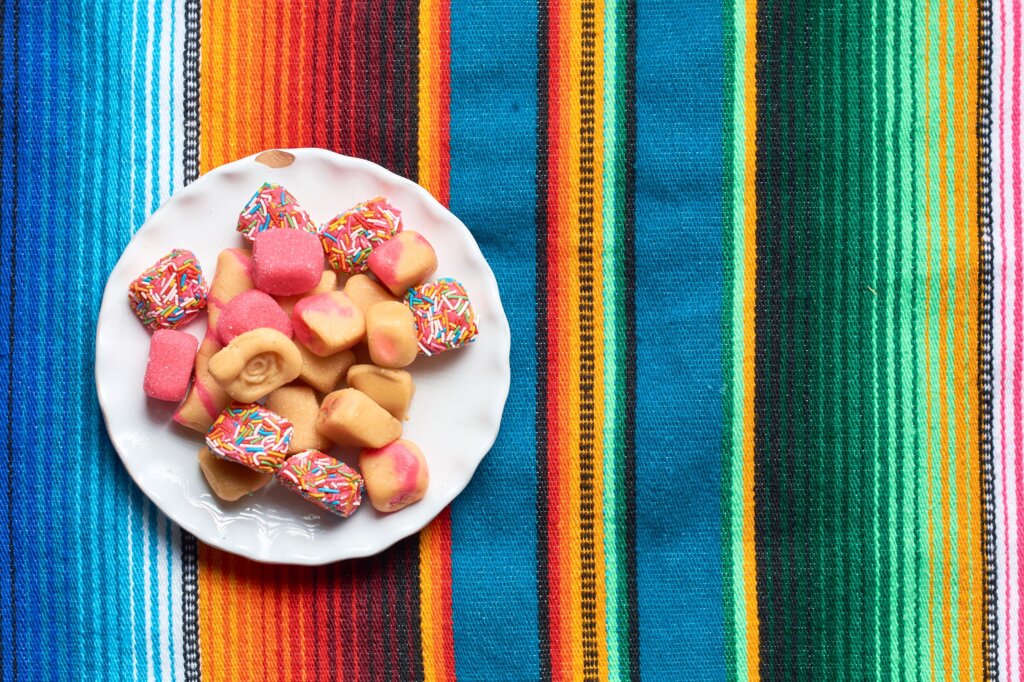
Palanqueta
This candy is a bar of nuts and seeds, mainly peanuts, pumpkin seeds, walnuts, and raisins, covered by brown sugar honey made with piloncillo, which has a crunchy texture. It is originally from Coahuila, but we enjoy them throughout the country.
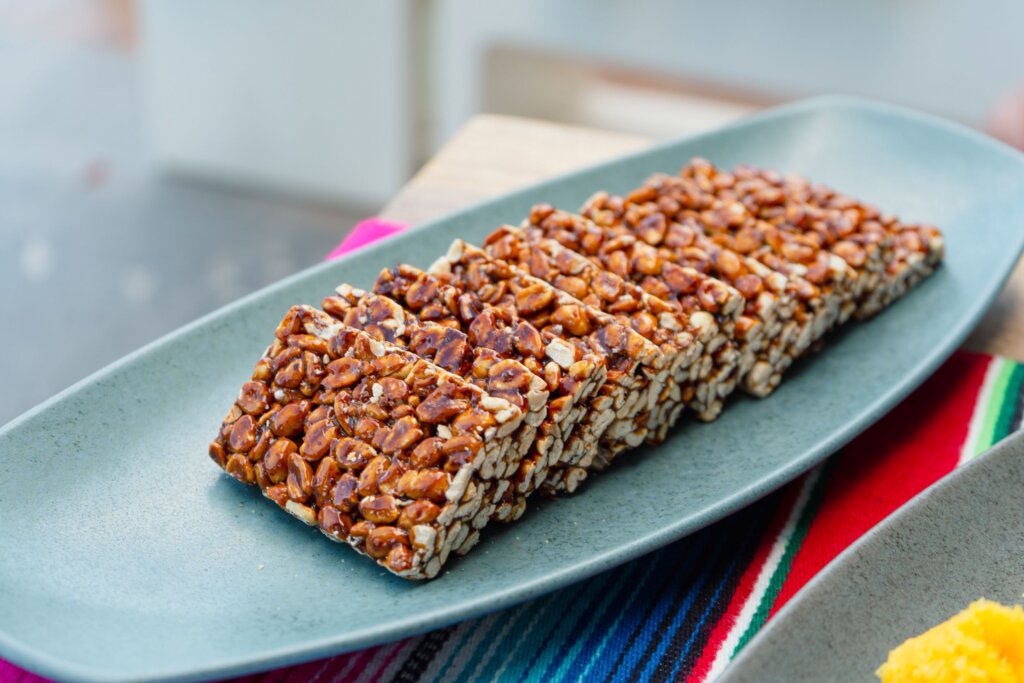
Cocada or coconut candy
Cocadas’ classic flavor and texture are due to the star ingredient, coconut. They are formed in small biscuits made of grated coconut, brown sugar, sherry, milk, and egg yolks. Once baked, they become soft. Cicadas are produced in many countries in Latin America and Europe; of course, each one gives a personal touch to them. Have you tried them?
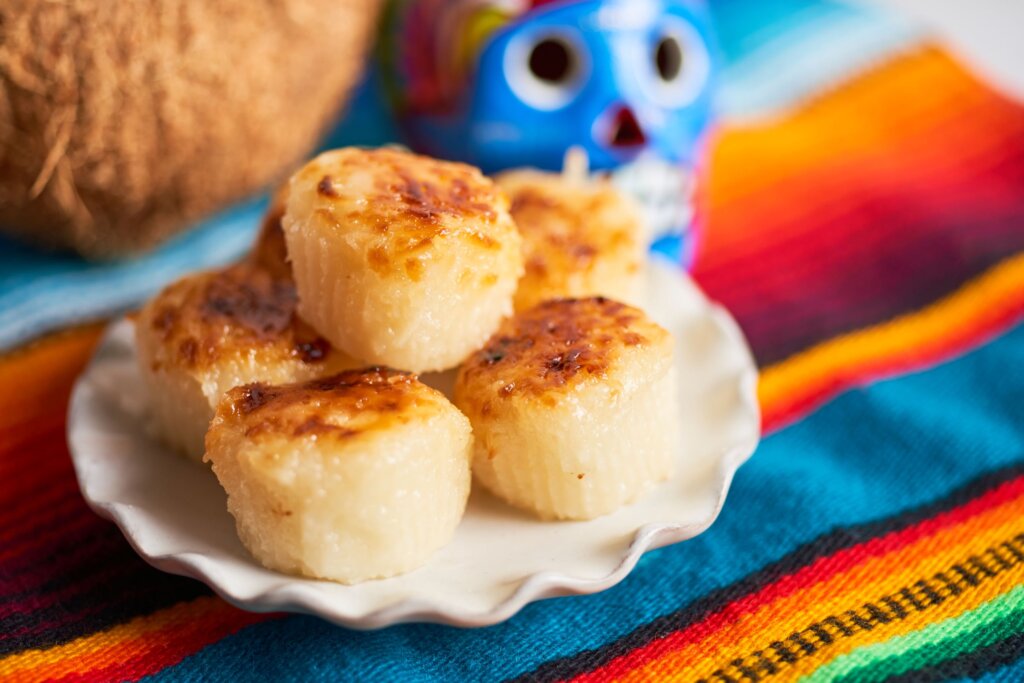
Pepitoria
These colorful wafers are distinguished by their crunchy edge, which is topped with caramel and pumpkin seeds. We find them at typical town fairs in the center of the country, and they are the perfect companion for a stroll in the park.
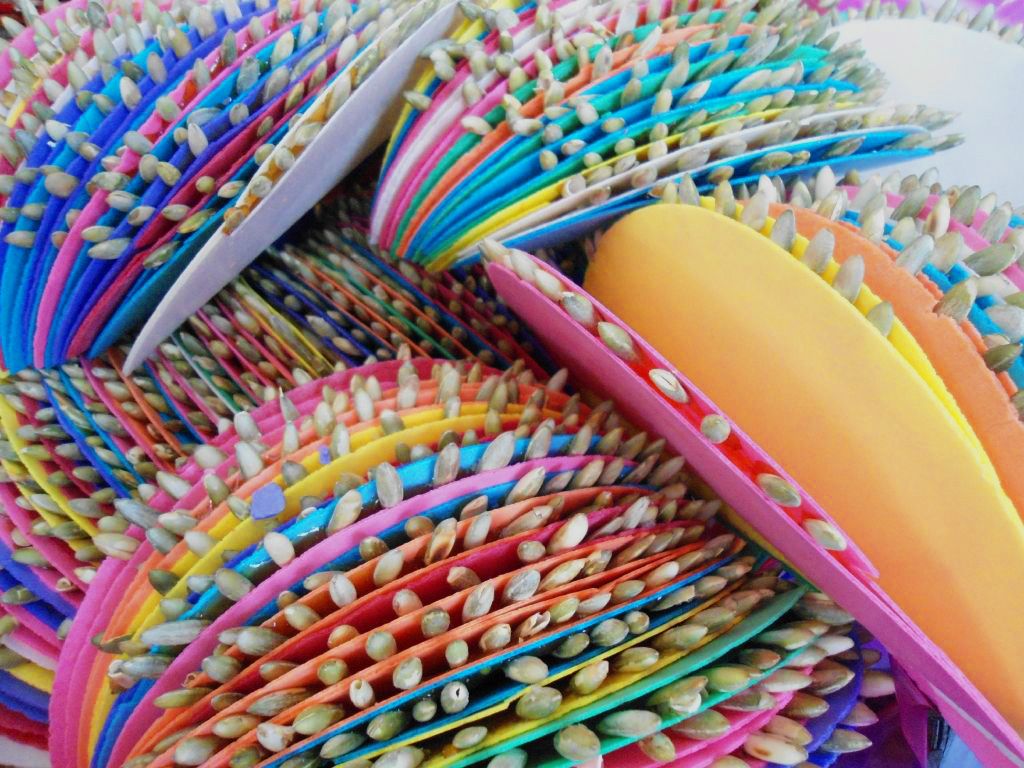
Borrachitos
These candies date back to the colonial age; the nuns of the convents prepared these small candies with flour, milk, and a dash of any liquor at hand to give them to the benefactors of their convents as a token of their appreciation. Their texture is very soft, and they are dusted with sugar. Pineapple, strawberry, lemon, and rompope are among the traditional flavors.

Obleas
Mexican wafers, known as “obleas,” are a simple yet delicious treat. They are made from two thin, crispy layers of wafer crafted from flour and water. A sweet filling is added between these layers, such as cajeta (caramelized goat’s milk), chocolate, or a mix of fruits and nuts. The process involves cooking the wafers in a hot press, ensuring they come out thin and crispy. Once filled and assembled, they are left to cool, resulting in a light and flavorful dessert.
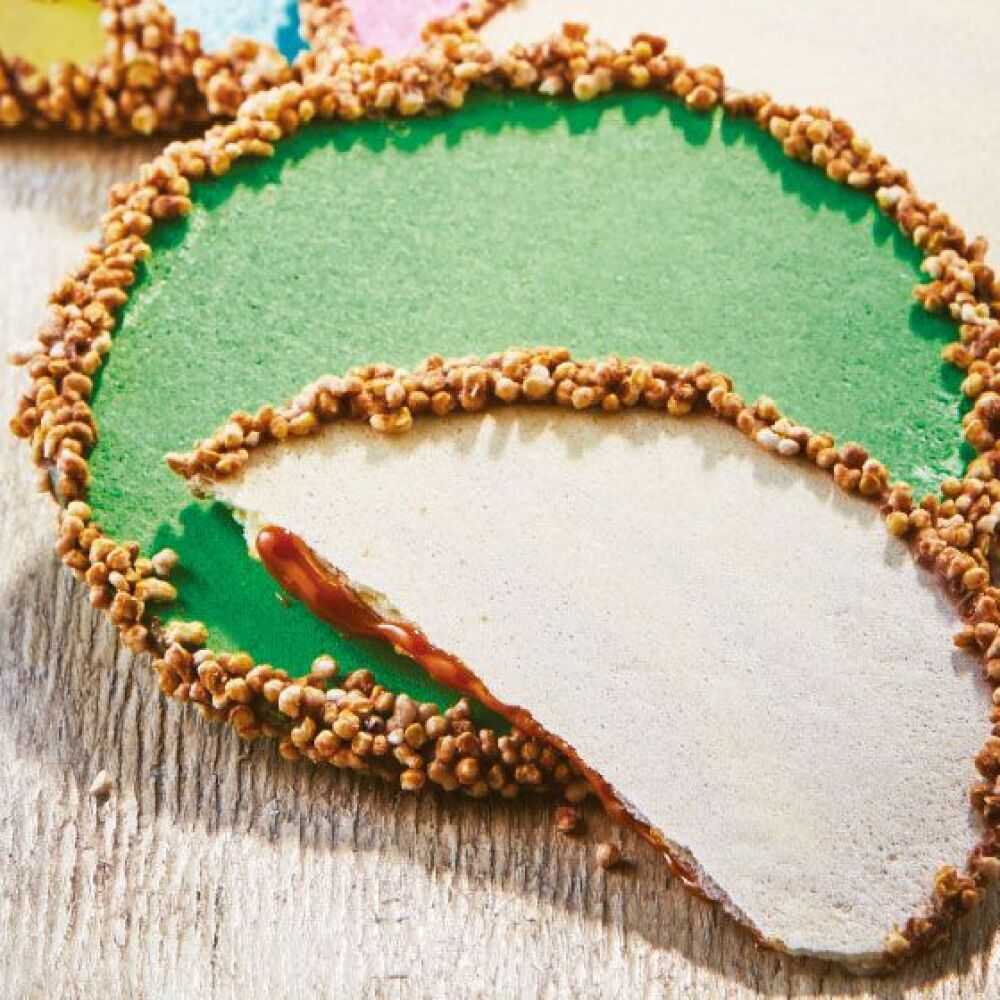
Special recipe of alegrías
All of them are delicious at any moment of the day, as they captivate you with every bite. So now we want to share a very easy recipe for making amaranth alegrías bars for you to enjoy at home.
Ingredients
- 5 cups of amaranth seeds
- 1 cup of chopped walnuts
- 1/2 cup of pumpkin seeds
- 1/2 cup of raisins
- 1/2 cup of peanuts
- 16 oz. of piloncillo (or brown sugar)
- 1/2 cup of bee honey (or the one of your preference)
- 1 tsp. of lime juice
Preparation
- Brown all the seeds separately. Reserve in a bowl.
- Add the piloncillo (brown sugar), honey, and lime juice in a saucepan. Wait for the ingredients to melt and make a caramel.
- Pour the caramel over the seeds and mix well.
- Pour the mixture on a baking sheet before the caramel cools and spreads over.
- Let it cool for 2 hours and cut into medium squares.
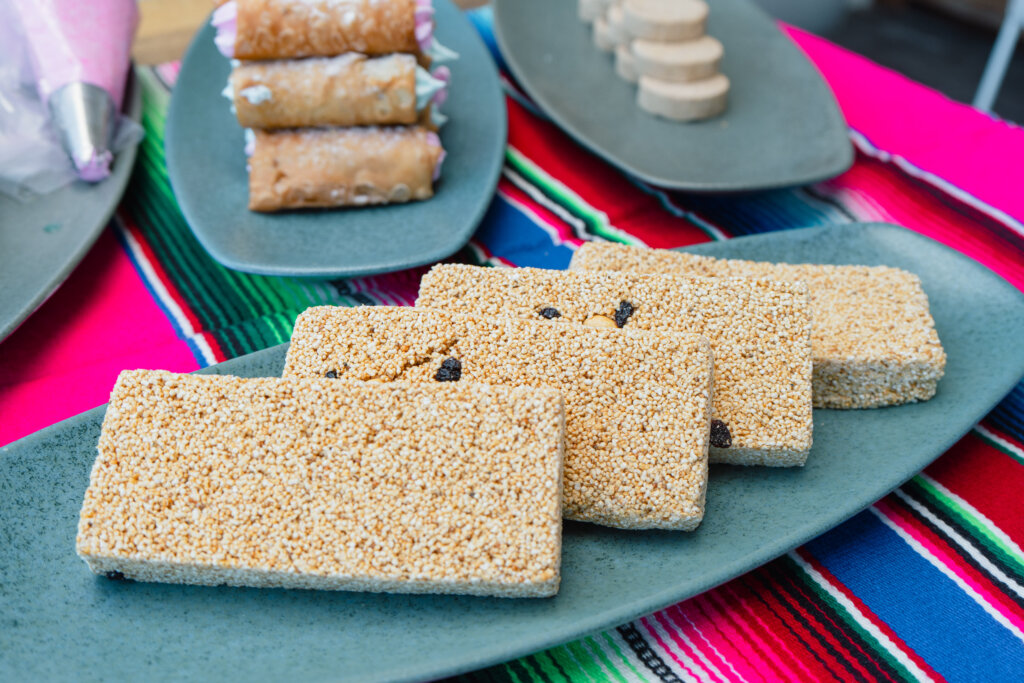
Tradition and Learning in Grand Velas Los Cabos
Grand Velas Los Cabos has expanded its range of activities for younger guests by introducing an exciting new workshop focused on Mexican pastry-making and traditional sweets. This experience, designed to blend fun with learning, allows children to immerse themselves in Mexico’s rich culinary heritage while developing their kitchen skills.
In a vibrant and colorful setting, young chefs will don their aprons and roll up their sleeves, ready to create a variety of traditional Mexican sweets. Guided by expert chefs, children will learn to prepare colorful wafers, crispy peanut and caramel brittle, fresh fruit popsicles, and coconut candies. Each recipe has been a part of Mexican culture for generations and is now within reach for young guests.
The workshop is a cooking class and an educational experience connecting children with Mexico’s traditions and history. By preparing these sweets, children acquire basic culinary skills and uncover the stories and context surrounding each recipe, understanding how these treats have been integral to celebrations and daily life in Mexico.
In addition to taking home a collection of authentic recipes, children develop a deeper appreciation for Mexican customs, enriching their overall experience at the resort. Grand Velas Los Cabos is committed to offering guests experiences beyond their stay, providing meaningful learning opportunities and cultural connections. The young participants will leave with memories of a fun activity, a new perspective, and a sense of accomplishment.
Expanding offerings for children at Grand Velas Los Cabos reflects a continued commitment to creating memorable experiences celebrating culture, tradition, and innovation. This Mexican pastry and traditional sweets workshop is just one of the many ways the resort continues to elevate the standard of hospitality and entertainment for the entire family.

